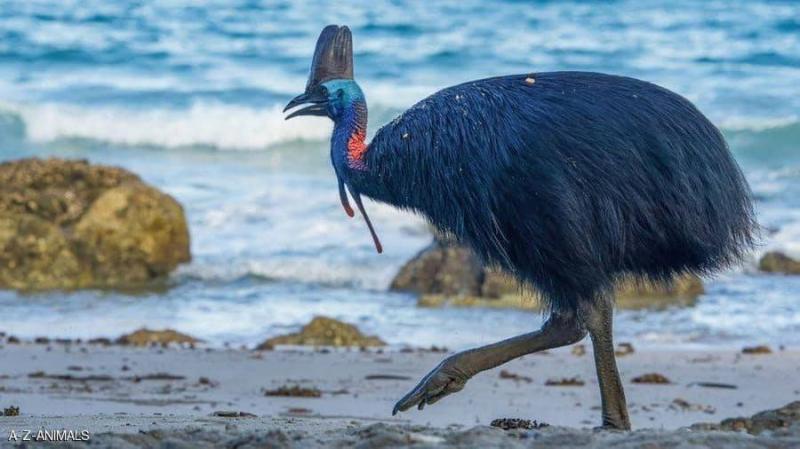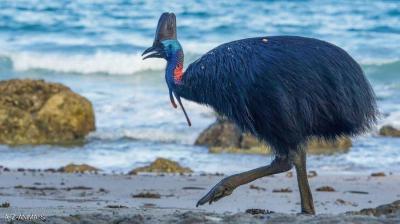Under the title "Thousands of Years Ago... How Humans Domesticated the Most Dangerous Bird in the World?", Sky News Arabia published a report suggesting that, in a seemingly strange paradox, a recent study indicated that the first bird domesticated by humans thousands of years ago is what is known today as "the most dangerous bird in the world." According to a press release about the study highlighted by the American news network CNN, this bird is the "cassowary," known for its long dagger-like toes.
The report notes that humans were raising this large, aggressive bird between 18,000 and 6,000 years B.C. The study was conducted on over a thousand samples of fossilized bird eggshells found on New Guinea Island, north of Australia. It concluded that "early humans may have gathered cassowary eggs before they hatched, to raise their chicks until they grew."
The cassowary is a flightless bird characterized by aggression but can be tamed at an early age as it associates with the first thing it sees after hatching and maintains a good relationship with it as it grows. In 2019, a man was killed in Florida after an attack by a cassowary.
Christina Douglas, the lead author of the study and an assistant professor of anthropology and African studies at Pennsylvania State University, stated: "This behavior we see predates chicken domestication by thousands of years," as it is believed to have first occurred about 9,500 years ago. She added in a press release, "It is not a small bird; it is large and ornate with the ability to eviscerate you."
According to the study, human ancestors likely domesticated the smaller species of cassowary, with the adult weighing about 20 kilograms. Today, the cassowary is the largest vertebrate in New Guinea, and its feathers and bones are valuable materials for crafting ornaments and ceremonial clothing, while its meat is considered a delicacy on the remote island.




